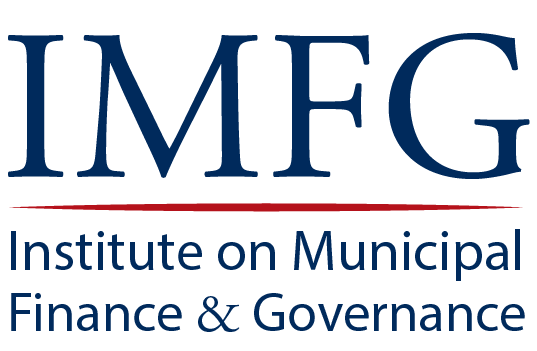Restoring the Place of Indigenous Peoples in the GTHA
by Pamela Palmater
The Greater Toronto and Hamilton Area (GTHA) is known for its diversity and remains the top choice for new immigrants to Canada. Nearly half its population was born outside Canada. In downtown Toronto, one can venture to Chinatown, Little Italy, Little India, or Greektown to enjoy foods from around the world or sample arts and crafts during annual festivals. What is missing, however, is a vibrant Indigenous presence in the GTHA. Most Torontonians are surprised to learn that as many as 73,000 Indigenous people call the GTHA home.
The Truth and Reconciliation Commission’s (TRC) 94 Calls to Action reminded every Canadian that truth, justice, and reconciliation with Indigenous peoples is not just the responsibility of the federal and provincial governments, it is also a commitment required of municipalities, universities, businesses, the media, and individual Canadians. The real goal of reconciliation is not met by a one-time political apology, the renaming of National Aboriginal Day to National Indigenous Peoples’ Day, or land acknowledgements before city council speeches and events.
Reconciliation requires that municipalities fully engage in the difficult process of getting to the truth – not just of the horrors of residential schools, but of genocide, land dispossession, stolen resources, economic blockades, and ongoing racism and violence towards Indigenous peoples. These injustices have resulted in crisis-level urban homelessness among Indigenous city dwellers; the over-incarceration of Indigenous peoples; the over-representation of Indigenous children in foster care in numbers higher than those of the former residential school population; high rates of police-involved deaths of Indigenous peoples in cities; and murdered, missing, and trafficked Indigenous women and girls. The GTHA has considerable work to do to start making amends, not only for its colonial legacy, but for the ongoing injustices lived by urban Indigenous peoples in the region today.
In my vision of GTHA, we should be able to walk, bike, or take a bus to places in the region that showcase Indigenous arts, culture, food, entertainment, education, recreation, government, politics, and business. We should also be able to see Indigenous peoples and Nations represented throughout the entire GTHA, since no matter where you live, work, or play in the GTHA, you are doing so on Indigenous territories.
For National Indigenous Peoples’ Day, the City of Toronto erected a medicine wheel in a prominent location – beside the Toronto sign at Nathan Phillips Square. This sign remained until the conclusion of Canada Day – that is, for less than two weeks. This important contribution reminded residents, new immigrants, and tourists about their roles in reconciliation. However, why was the medicine wheel displayed for only 10 days? Indigenous peoples should be able to see themselves reflected in significant places in the GTHA every day of the year.
Good intentions are no longer enough. We need to move beyond the celebratory, which often historicizes Indigenous peoples, and towards substantive reconciliation. Real reconciliation will be uncomfortable and difficult at times. A real apology means accepting responsibility for what has happened, promising never to let it happen again, and making amends.
The GTHA’s contribution to and increased support for social programs to address issues related to homelessness, racism in policing, inequitable access to health services, and violence against Indigenous women and girls is part of the answer, but not all of it. The same can be said of support for Indigenous cultural and service-based organizations. The region must do more than merely address the symptoms of injustice, it must work towards ending injustice. Making amends for past injustices – many of which cannot be undone – requires a fair transfer of land, wealth, and power back to Indigenous peoples.
What would this look like in the GTHA? For starters, city councils (and businesses) should identify land and buildings that could be used to support Indigenous individuals, businesses, community groups, social and advocacy organizations, and governments in carrying out their work. These Indigenous hubs should not be tucked away in remote parts of the region, but include prominent locations. In terms of wealth, the region needs an Indigenous procurement strategy to ensure that a percentage of contracts and services in the region are designated for Indigenous businesses and communities.
How would the region pay for all of this? Reconciliation should now be viewed as the cost of doing business – a cost shared by residents, business owners, and governments alike. While there is little chance of Indigenous peoples ever getting adequate compensation for the lands, resources, and wealth lost in the GTHA, Indigenous governments need a fair share of the wealth to reach self-determination – a key goal of reconciliation.
A formula designed in partnership with local Indigenous governments would ensure that Indigenous peoples share in the wealth created on their territories – including fees, fines, licenses, taxes, and royalties. Indigenous governance should be understood not only in terms of self-governance, but also power within current governance structures. Seats on each city council should be designated for local Indigenous governments and urban Indigenous representatives.
This is not about “sharing” power by adding token or advisory-type seats; it is about transferring power and making space within current councils for Indigenous representatives. Indigenous peoples could help govern the region and ensure that proper communication protocols are designed, dispute resolution mechanisms created, and Indigenous-municipal collaborations enhanced for everyone’s mutual benefit.
This plan would require regional financial support from businesses and municipalities to facilitate Indigenous community and urban participation on planning, policing, legal, business, financial, economic development, arts and culture, and social services committees in each municipality in the region.
The plan requires significant changes in the way we govern, do business, and plan for the future. Every single person in the GTHA benefits from the historic and ongoing dispossession of land, wealth, and power of Indigenous peoples – whether they have lived here for three generations or arrived only yesterday. Everyone should contribute to making amends to Indigenous peoples.
Yes, it will be hard. Those who have most benefited from our lands and resources will find the changes painful. However, nothing less will achieve true reconciliation and social justice within the GTHA. We could be the best region in Canada in terms of education, living standards, economic development, environmental sustainability, and social justice for all if we take up the TRC’s Calls to Action and do our part towards achieving truth, justice, and reconciliation with Indigenous peoples.

Dr. Pamela Palmater is a Mi’kmaw citizen and member of Eel River Bar First Nation from New Brunswick. She is a lawyer, author, and social justice activist, and Chair in Indigenous Governance at Ryerson University.
